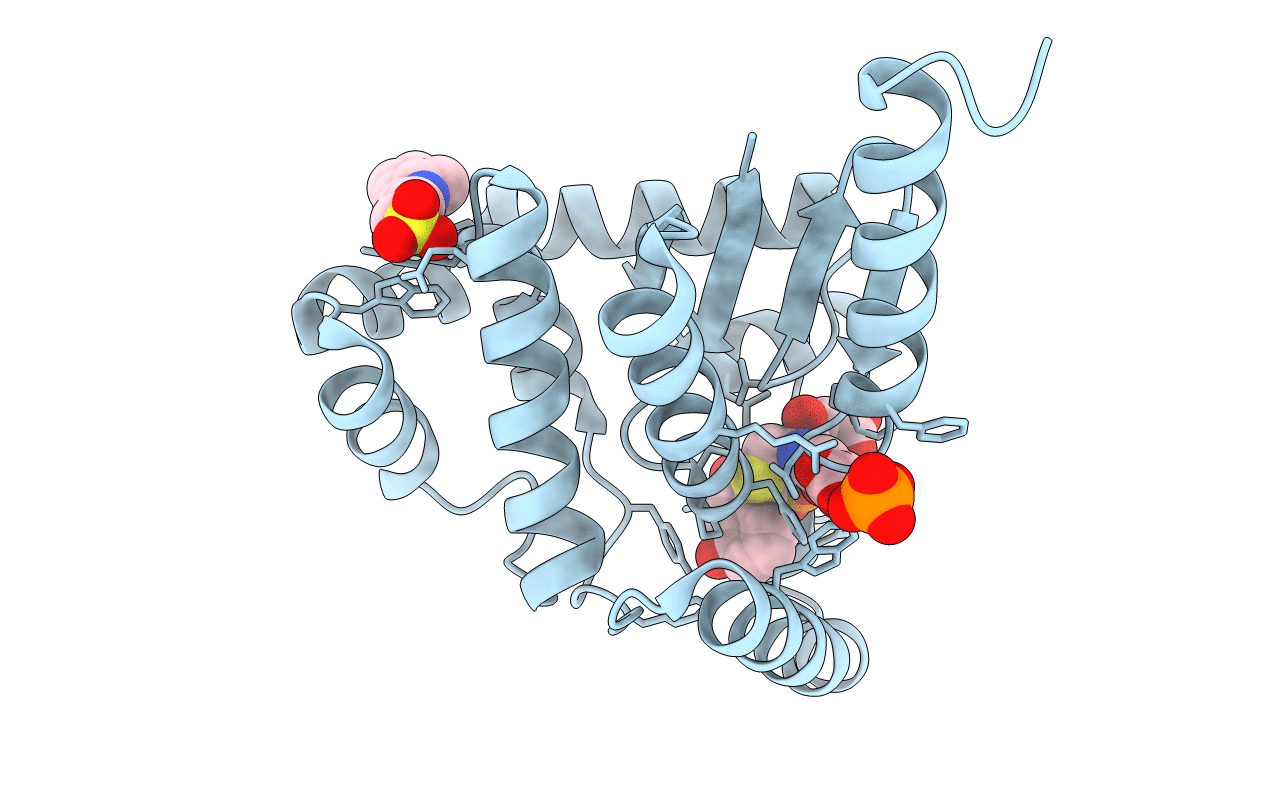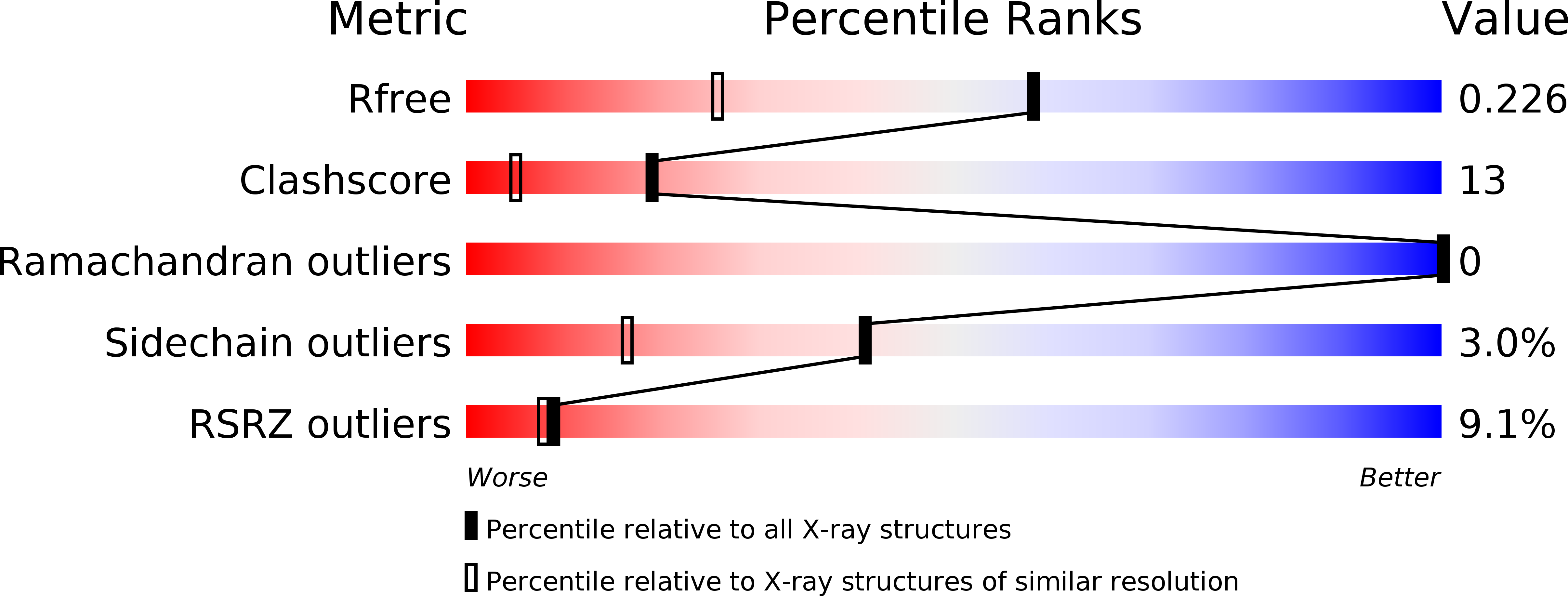
Deposition Date
2006-10-04
Release Date
2007-06-12
Last Version Date
2025-03-26
Entry Detail
PDB ID:
2IMD
Keywords:
Title:
Structure of SeMet 2-hydroxychromene-2-carboxylate isomerase (HCCA isomerase)
Biological Source:
Source Organism:
Pseudomonas putida (Taxon ID: 303)
Host Organism:
Method Details:
Experimental Method:
Resolution:
1.60 Å
R-Value Free:
0.22
R-Value Work:
0.18
R-Value Observed:
0.18
Space Group:
P 21 21 2


